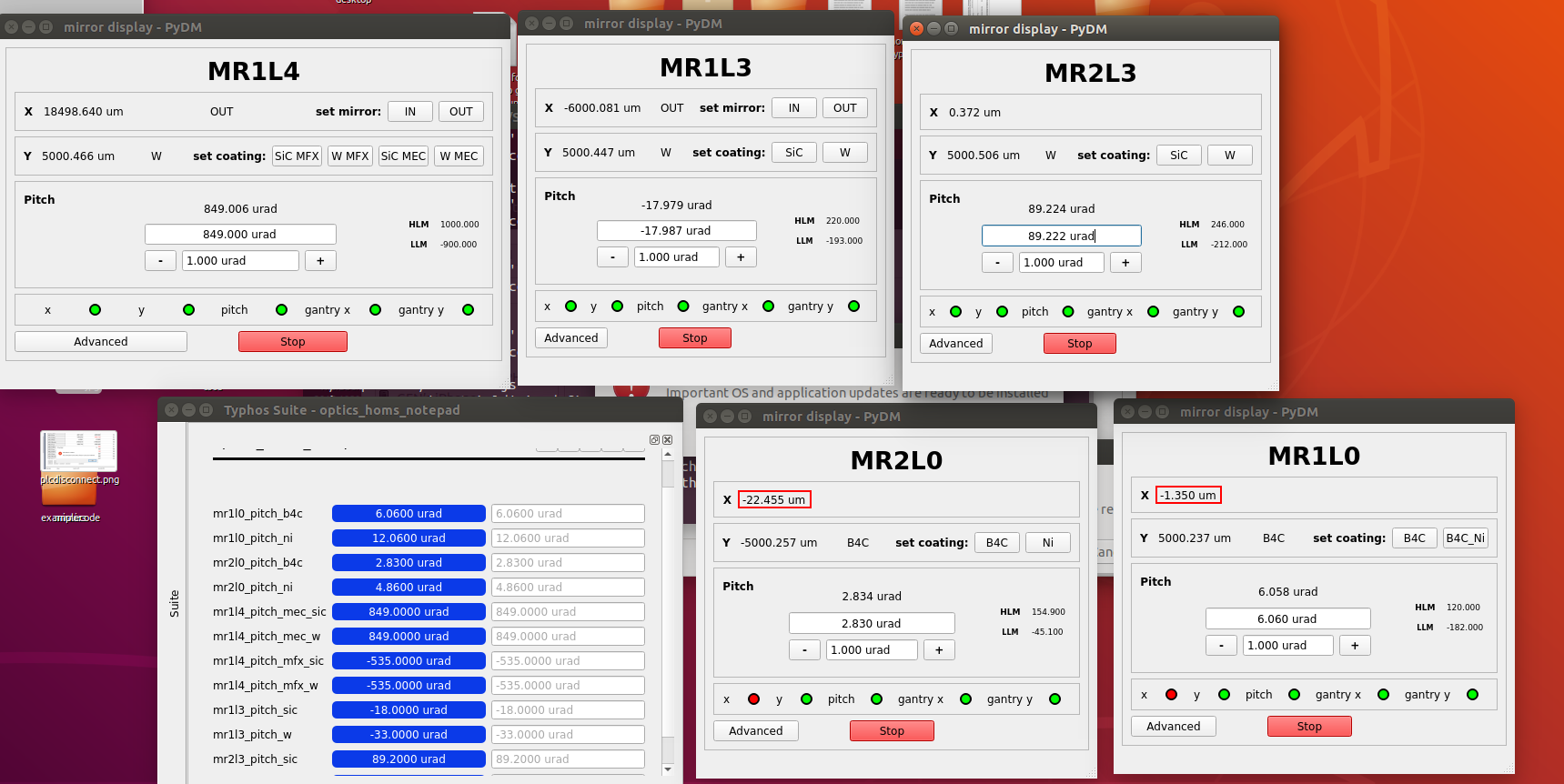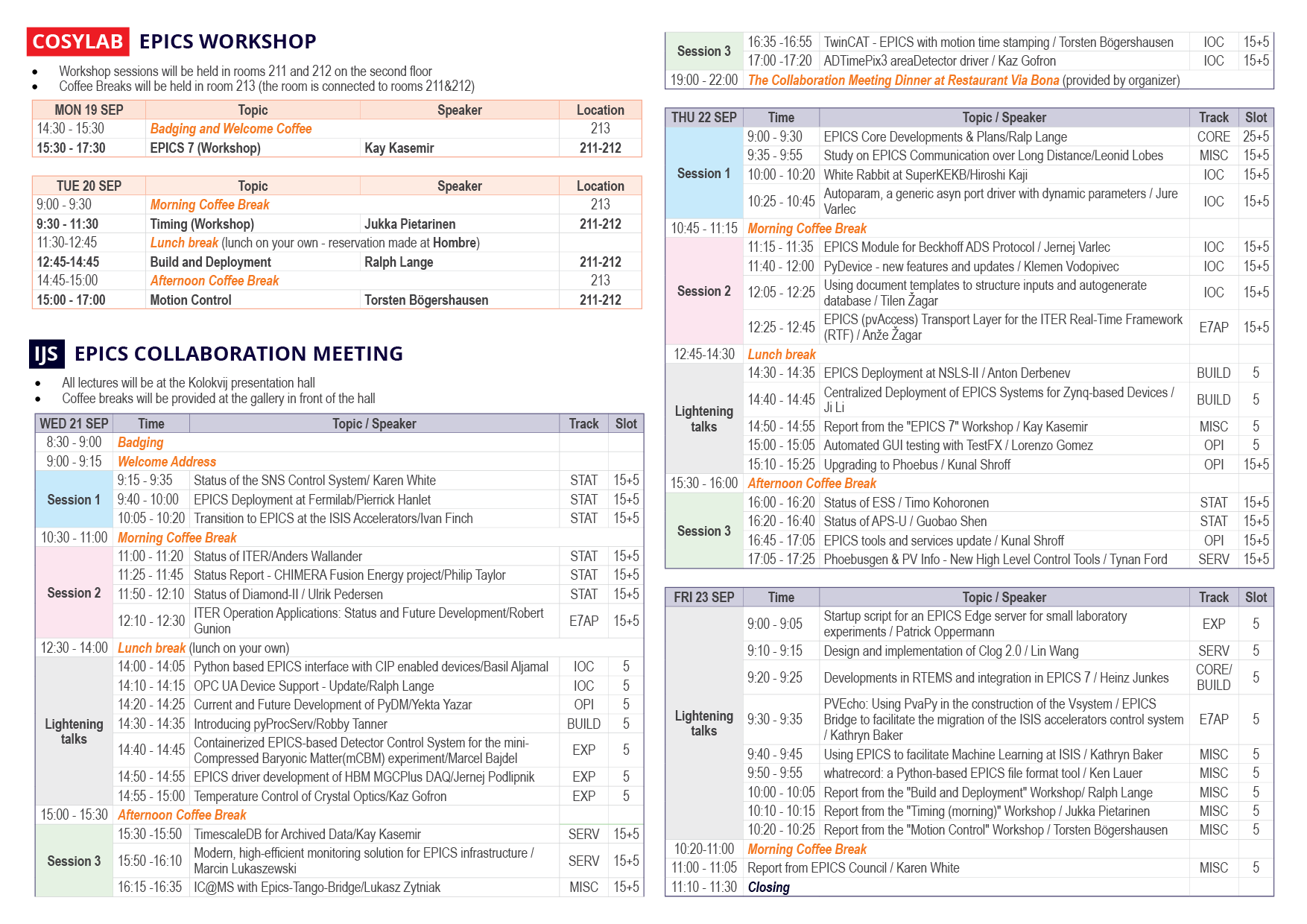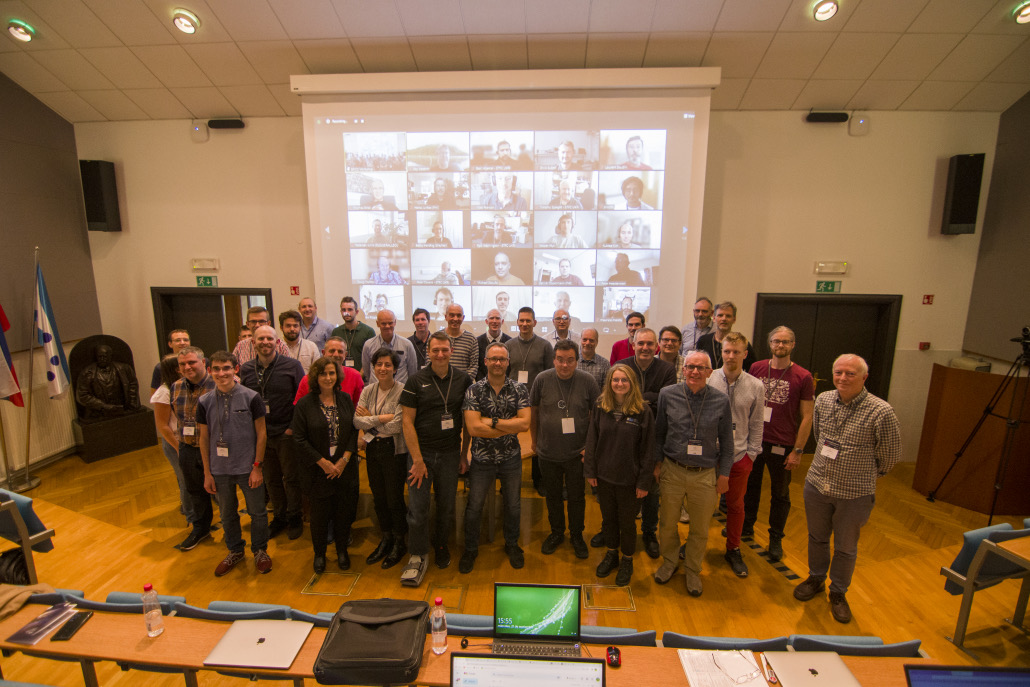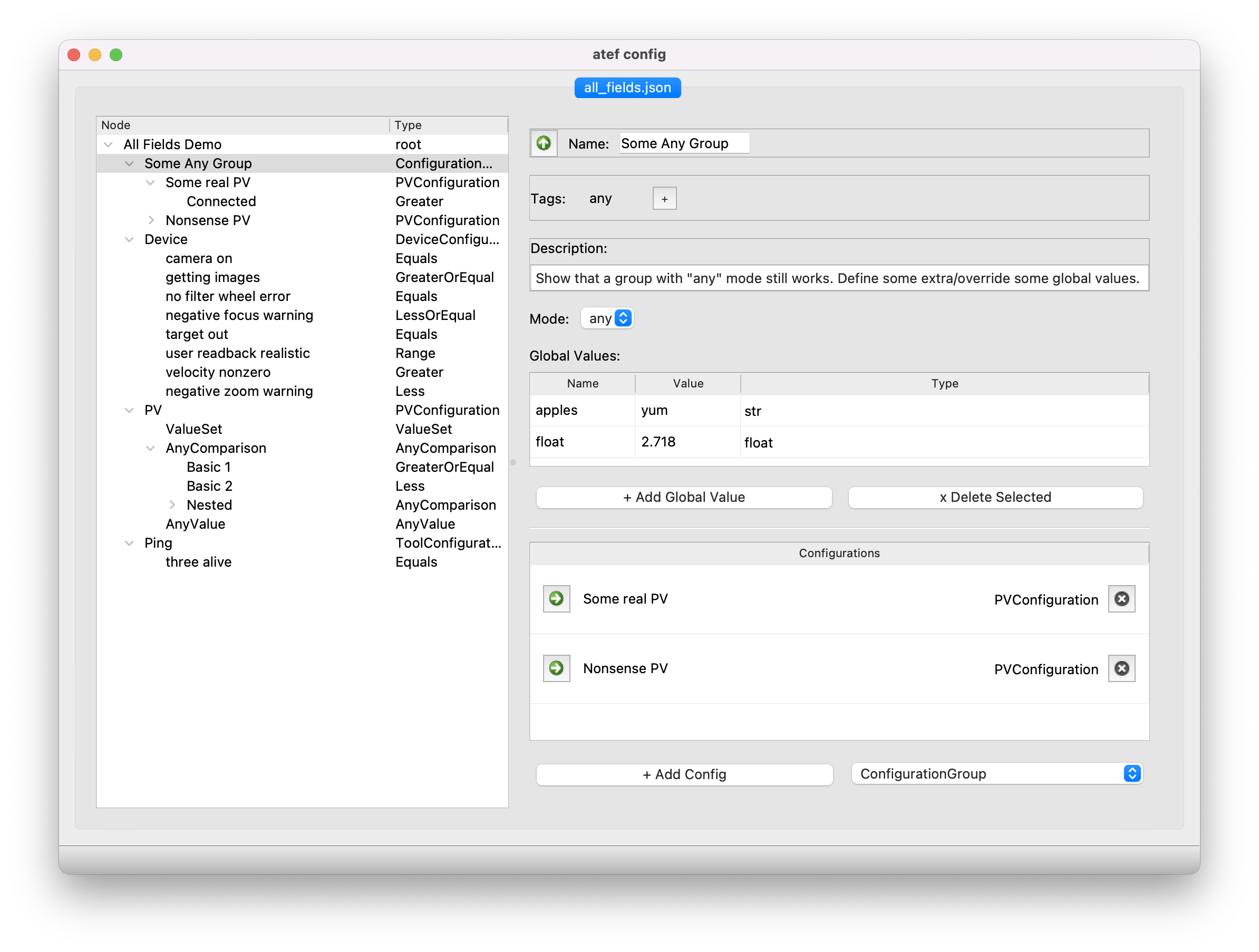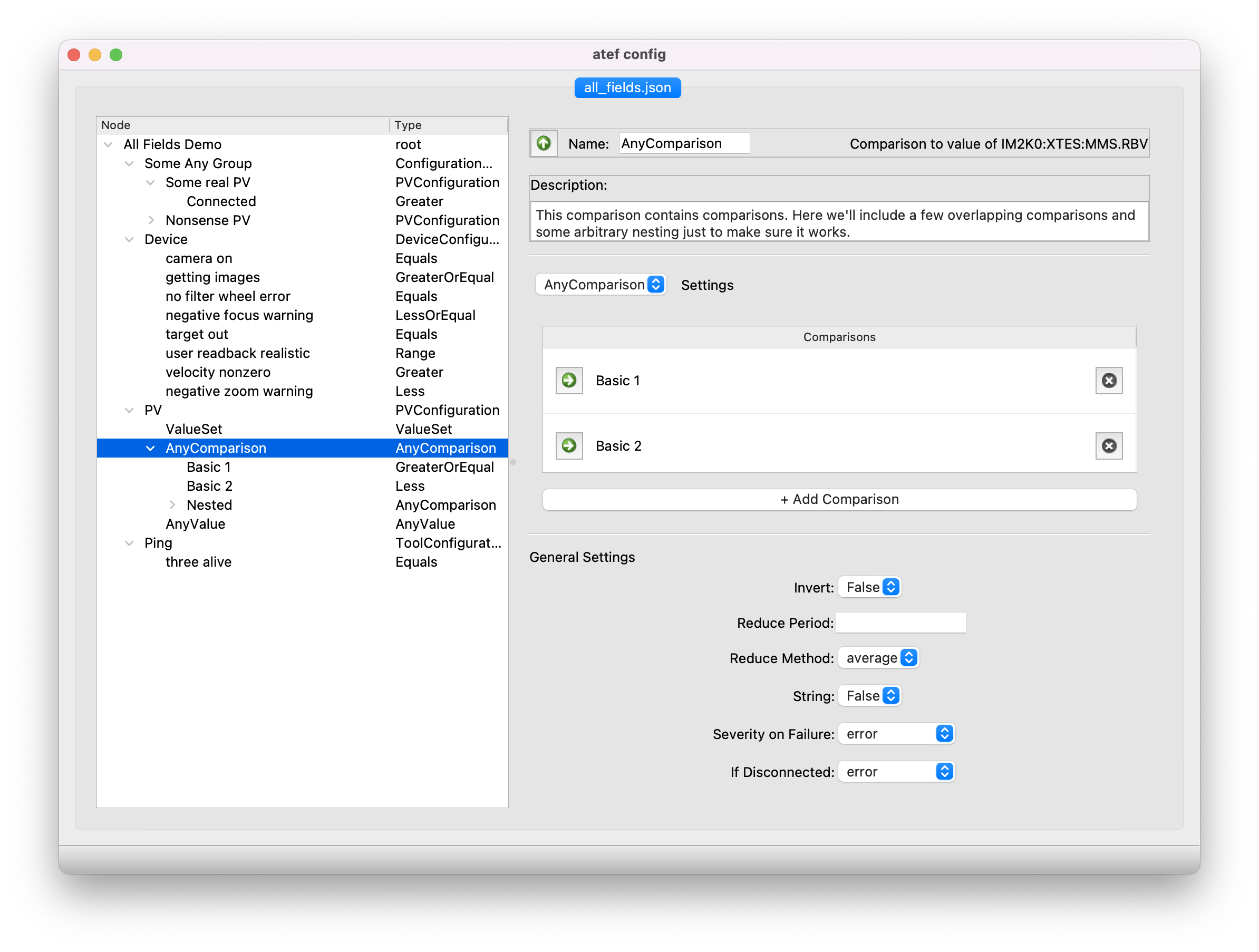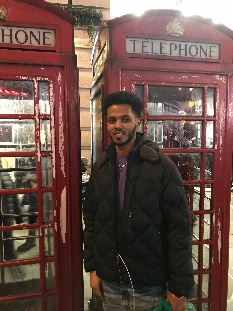SC Readiness
The LCLS directorate held a Run 21 readiness workshop in early September to review preparations for the arrival of the LCLS2 beam. After the workshop, LCLS formed an SC Readiness taskforce (Delta Force) to tackle issues, risks, and scope raised at the workshop. The effort is ongoing and we're having a blast!
ECS created a Run 21 readiness dashboard for the workshop you can review here:
https://jira.slac.stanford.edu/secure/Dashboard.jspa?selectPageId=14380
Any controls/data/timing/IT issue that is considered essential or important for the arrival of SC beam, or SC commissioning, KPP measurements, or validation measurements is labeled with an sc-readiness label and this makes it appear in the dashboard.
Supported Device List Update
We officially completed the Jira epic to update the SDL after nearly a year. Please refer to the SDL for system design and support.
One item of note is the status of Micronix piezo actuators and drives. Due to some concerns over reliability, these drives have been marked as EOL, meaning they are not approved for new designs, nor approved for purchase for new assemblies. Existing configurations are still supported, as is purchasing replacements for existing configurations. For more information contact Tyler Johnson .
TXI installation for RP air attenuation test
TXI will conduct RP testing on the HXR line in March - April 2023. This test is to verify air attenuation models at different repetition rates.
During this summer shutdown, we started controls work in FEE and TMO hutch for both (HXR & SXR) TXI lines. This includes design, some procurement, panels/cable fabrication, installation, testing and PLC/IOC software work. All the Vacuum and Motion PCLs are setup and both TXI lines in FEE area are online with Pydm screens.
TMO hutch installation is still ongoing and we plan to have that work completed by end of this year depending upon the hutch access during upcoming PRP experiments and other related work.
Motor soft-limit display issues
A long-standing, GUI bug, causing inconsistencies between the display limits, the limit protection in the python layer, and the limit protections in the motor IOC, has been fixed. This issue occurred for specific motor types due to python GUI/display related classes failing to notice underlying limit position updates.
This bug is caused by differing behavior in how certain motor IOCs update their limit metadata and possibly how this metadata propagates (or does not propagate) through the channel access gateways.
Automatic pitch adjustment for offset mirrors
Offset mirrors will now auto-pitch along with the ability to select a coating position. Desired pitch positions based on hutch and coating can now be saved in a notepad. When users request a coating, the mirrors will respond by moving to a preset coating position and then auto-pitching.
Better power supplies for 901
Federica Murgia All din-rail power supplies in building 901 have been replaced by sealed, desktop power supplies for better compliance with electrical safety.
The new 24V desktop power supplies are currently stored in office 113 F, and they can be used only for the racks in building 901.
Each power supply comes with a power cord and a 24V power supply cable 3ft long (they are all labeled).
Note: each power supply can handle more than one PLC, but the current range is 0 ~ 11.67 A.
You can find more information about the first power supply inspection and the new power supply on this confluence page.
Please, update the equipment tracking sheet if you take one of them.
Improvement of python environment testing
It was noted recently that the Python environments update too dramatically from release to release. Our python environment is a mix of SLAC+ECS developed libraries in combination with other open source software (OSS) projects. We adhere to a policy of rigorous testing and refreshing all dependencies when we update our own libraries, but it has become clear the pace of external community "unexpected bugs" far outpaces our testing capacity.
We've added more local testing steps and have rewritten our update scripts to minimize dependency updates. Hopefully this brings us to a state where most bugs introduced by an environment update are minor and mostly our own creation, rather than being introduced by an external OSS contributor.
Imaging systems and network impact analysis
We've recently looked into some theoretical limits for running imager systems (GigE cameras) in general and on our IT infrastructure. The methods, reasoning, and conclusions can be browsed at Understanding Camera Network Traffic Limits.
In a related note, TMO triggered GigE camera acquisition has seen stability issues as we approach these theoretical limits. These issues can cause dropped frames which is problematic for DAQ data. Efforts to stabilize these is ongoing.
Ion Pump QPC Controller Issues, Improvements Incoming
We contacted Gamma Vacuum regarding issues with long-run (cable distance) ion pump QPC controllers and their noisy pressure readings in August. This led to a meeting with Edwards Vacuum, their partner company, where we discussed a temporary solution to update the controller firmware with an unreleased version. This unreleased firmware had been deployed to solve similar issues in Germany and the AD at SLAC. In October, we updated the firmware on B940:009:R03:PCI:01 inside of the FEE. This improved the stability of the pressure reading on two of the three working ion pump channels, however there was still some variance in the third channel.
Another ongoing issue is the inability to run all four QPC channels at once without error. When all four channels (and sometime even three or two) are run simultaneously the controller will eventually trip off all channels due to an error. This topic was discussed with Edwards as well, but the fix is to replace the CPU chip in each QPC or to procure completely new QPCs with necessary hardware updates and RMA the controllers with issues. All QPCs with the 4-channel error must be sent back to Edwards so that they can replace this chip, but this is not possible at the current time with supply-chain issues and critical dates for operations. We are pushing to get new QPCs, which were ordered last year, to be prioritized in their backlog so we can replace these controllers and send the defective ones out to be fixed.
Finally, there have been multiple problematic ion pumps on the HXR line that have been delivering lackluster vacuum levels for months. One pump has been replaced. After a long RMA process due to the aforementioned supply chain issues, the controller for all of these pumps was swapped for a freshly RMA'd one. While the pumps are able to stay on consistently now, their pumping capacity seems to remain sub-nominal. They have been hi-pot tested and the worst performing pump was determined to fail the hi-pot test. This debugging process is ongoing.
LCLS-II-HE
The HE Controls team have, as of early October, completed PDR for 4 out of the 7 L5 WBS areas: XPP instrument controls, MFX instrument controls, FEE and XRT area and Common Components. Congratulations team! Preliminary design activities for the other areas are on track with good engagement from the team. Activities for 3B reviews and drilldowns preparations are in progress.
Validated Machine Configuration Database Project Update
Alex Wallace Machine Configuration Database
We have a concept demo up and running. We still need to find some bandwidth to polish the frontend, and then we'll be ready for a release. Aiming for early November.
Laser, Beam Transport System (BTS)
The Beam Transport System connects the NEH interaction points with the laser hall laser sources through an easy to operate, and safely interlocked interface. A new motion control screen and back-end system was developed and deployed in September. This system includes configurable, archived values for nominal beam delivery positions from every laser source to every laser destination, automated source → destination motion control, and protective logic checks to protect against equipment damage. The system determines laser destination based on motor position, making the active laser destination available as PVs. The GUI provides graphical feedback of motor positions, as well as estimated beam delivery based on system state (see the green lines below representing the approximate beam path).
EPICS Collaboration
The 2022 EPICS Collaboration Meeting took place this year in picturesque Ljubljana, Slovenia.
The meeting was hosted by Cosylab, with the workshops taking place at their headquarters and presentations at Jožef Stefan Institute.
There were over 100 attendees (in-person and virtual). Of the in-person attendees, 32 were external to Cosylab.
Several SLAC and local Cosylab engineers were fortunate to be able to join the meeting in person this year.
The first day was dedicated to an EPICS 7 workshop, run by Kay Kasemir.
The second day of workshops included Timing (Jukka Pietarinen), Build and Deployment (Ralph Lange), and Motion Control (Torsten Bögershausen).
SLAC talks included Current and Future Development of PyDM (Yekta Yazar) and whatrecord (Ken Lauer).
ATEF
Since the last newsletter, the passive check configuration scheme in ATEF has been reworked. ATEF now supports user-specified groupings of passive checks.
The configuration GUI (graphical user interface), pictured above, is currently being reworked in order to be able to support this new and flexible format.
LY45
LY45 (CVMI with complicated new configuration) was delivered successfully. Control did lots of work including adding new manipulator in the beam line, moving two piezo motors from LAMP to CVMI, redefining CVMI six motion axises, rearranging CVMI vacuum design. All works very well and TMO decides to keep the new manipulator into the beam line and adding two more piezo motors into CVMI gas jet later because the good experience of LY45.
Lightpath
Lightpath is coming along nicely. As the major work on the UI approaches completion, our focus shifts to updating existing devices to fit the new lightpath interface.
Previously many devices did not ready themselves for lightpath, or did so half heartedly. Most devices were straightforward to update, with some more complicated devices
requiring more investigation (eg. the various offset mirrors). We are doing our best to update and test these devices thoroughly, in order to minimize disruptions during deployment.
With the changes to the lightpath interface, we have updated the package documentation to include information on what lightpath expects and how to ensure your python / ophyd device can be read by lightpath. (https://pcdshub.github.io/lightpath/)
A lightpath demo has been set up, try it by running: (and let Robert S. Tang-Kong know if anything doesn't work)
/cds/home/r/roberttk/lightpath_demo/test_lightpath.sh -h
For basic usage notes: Lightpath basic usage
Hello, Goodbye
Jasmine, Nguyen joined the ECS Platforms Development team as a Staff Engineer 1, Controls System integrator, with a previous background in industrial controls. Studying mechanical engineering, mechatronics engineering, and sustainable manufacturing, Jasmine contributed to the SLAC sponsored, Spatial Alignment With Machine Vision Robot project at CSU Chico. When Jasmine is not on a rock, they can be found at a skatepark, ice rink, or ski resort. | |
Aron Rezene is a new intern from Washington, DC, joining the LCLS Exp. Control Systems Delivery Team. As an undergrad in Physics at SUNY Oswego, he fancied extracurricular studies in DSP & control systems engineering along with C++ to complement the experimental practices used in physics research. His personal interest include embedded systems and computational physics and before joining SLAC, he served as a test intern measuring thermal impedance of SiPh lasers at the LiDar startup Aeva. His indoor hobbies include chess and watching Arsenal matches, but he prefers to spend free time outdoors, playing soccer, catching up with friends, or going for a hike. |
We waved goodbye to Tyler Pennebaker in August as he prepared to set off for graduate school at UCSB. You can read his kudoboard here.
Jira
If you can't see these Jira plugins, please log into Jira/ Confluence. If you can't log into Jira, send mail to apps-admin@slac.stanford.edu and ask to be added to Jira.
Getting issues...
